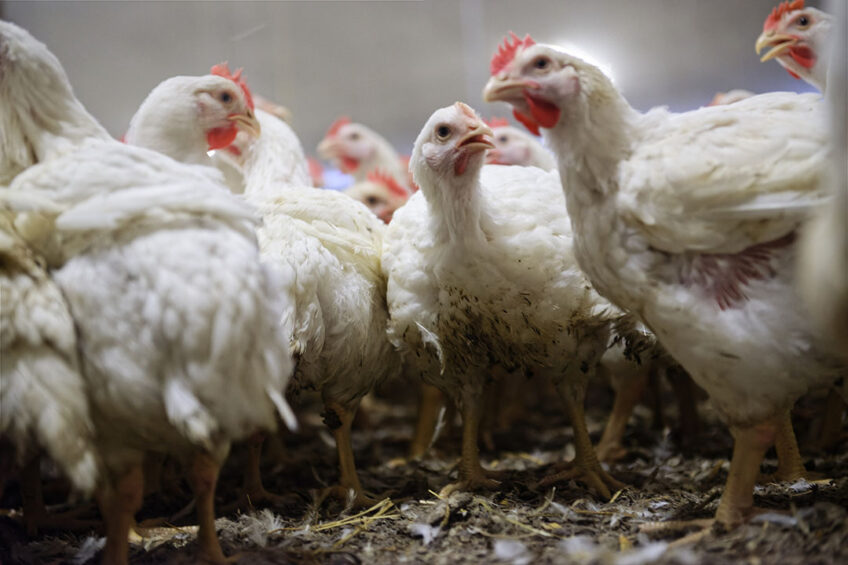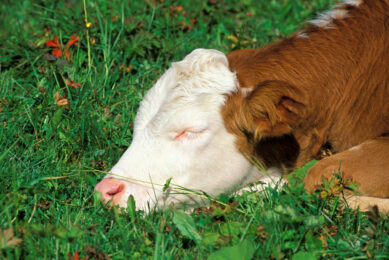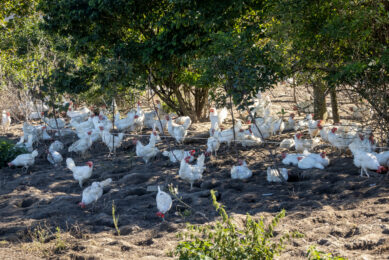Guanidinoacetic acid in broiler diets – effective in reducing breast myopathies

The verdict is in: Guanidinoacetic acid (GAA) is effective in broiler diets, where it reduces breast myopathies. A look at inclusion levels and whether this supplement affects bird performance parameters.
Today’s broiler chickens have been bred to develop large and heavy pectoral muscles because of all chicken cuts, chicken breasts command the highest premiums in retail and restaurant markets.
However, this breeding emphasis has led to a prevalence of imperfections such as woody breast (WB) and white striping (WS) in breast muscle, which leads to serious reductions in profits for chicken producers. Other factors such as oxidised fat in the diet also increase the incidence and severity of myopathies.
The good news is that after much initial research to tease out the underpinnings of why breast muscle myopathies occur, it’s been established that providing small amounts of GAA (naturally produced in animal cells) is an effective way to reduce the incidence of myopathy – and there is no appreciable impact on chicken performance parameters such as growth rate.
GAA seems unique in that it does not reduce feed conversion/growth performance
A quick dive into GAA
It has long been speculated that GAA and dietary arginine have a direct symbiosis in the formation of creatine, which plays a significant role in energy metabolism and therefore has direct effects on animal growth and muscle tissue growth, explains Dr Casey Owens, a meat scientist and Novus International Professor of Poultry Science at the University of Arkansas.
Obviously, amino acids such as arginine are also required to form muscle/protein.
Owens reports that other research groups such as Dr Bill Dozier and his colleagues at Auburn University have evaluated how limiting key amino acids such as lysine at various times in the broiler growth cycle, which slows growth, might reduce the incidence of myopathies.
“Doing so did reduce myopathies,” she says, “but it also negatively impacted growth, meat yields and feed conversion, thus reducing efficiency.”
A few years ago, another group at Texas A&M University evaluated several strategies, including the use of supplemental arginine and Vitamin C, doubling the amount of vitamin premix, reducing amino acids, and a combination of these treatments. Owens says the use of vitamin C, doubling vitamin premix and the combination of treatments had the greatest effect on reducing myopathies. Still, this feed strategy led to a worse feed conversion ratio.
Owens adds that “supplementing broiler diets with high levels of arginine alone has been shown to help a bit with the reduction of breast myopathies in some studies, but not in all of them.”
Creatine was also tried as a solution to reduce myopathies, but it isn’t very stable in supplement form, and giving it in the diet has not resulted in a significant effect on myopathies. However, Owens explains that “GAA is a form of creatine that’s more stable in supplemental form. GAA can spare arginine, which has been established as a vasodilator and, if it’s not present at high enough levels, vascular insufficiency can result. This leads to issues in muscle development, in this case, the breast muscle of chickens.”
GAA studies
The first studies indicated that adding 0.06% GAA to the diet reduced wooden breast while improving growth, breast meat yield and feed conversion ratio. These studies also indicated some variation in results depending on diet composition. For example, in diets based on sorghum, the lower arginine and methionine digestibility (due to the presence of kafirin and tannin) could reduce the efficacy of GAA.
Oviedo-Rondon notes that therefore, attention to dietary factors such as the presence of methyl donors or enough arginine seems to be essential to obtain positive results.
Present studies
Dr Owens and her lab did the most-recent evaluation of GAA in broiler diets to reduce myopathies. She recently presented her research at the 2023 Animal Nutrition Conference of Canada National Forum.
In the first study, supplementation of 0.12% GAA was found to be most effective in reducing WB. Supplementation of either 0.06% or 0.12% GAA reduced the severity of WS. These inclusion levels had no impact on live weight at processing and no negative impact on feed conversion rate compared to the control diet up to 55 days (the study length).
In the second study, a rate of 0.08% was given in 2 reduced-energy diets, 25 or 50 kcal/kg less than the control diet. On the day of processing, no differences were noted in final live weight or breast yield, so this suggests GAA may reduce myopathies such as woody breast without negatively affecting live performance.
Genetics a factor?
As to whether GAA may have different effects depending on genetics, Owens is not sure.
She first notes that both of the major commercial strains used worldwide are affected by myopathies. She further explains that “generally, the high breast-yielding strains have higher myopathy than standard breast yielding birds, but GAA would likely work similarly regardless of strain.”
Looking forward
Owens’ lab has also collaborated on trials to determine the impact of chelated minerals and the use of antioxidants and noted some reduction in myopathies.
“GAA seems unique in that it does not reduce feed conversion/growth performance,” she says. “We haven’t tried a higher inclusion rate yet, and we may do so with some industry partners, but we’re not sure if supplementing at a higher level would have benefits that outweighed the cost or even perhaps detrimental effects.”











